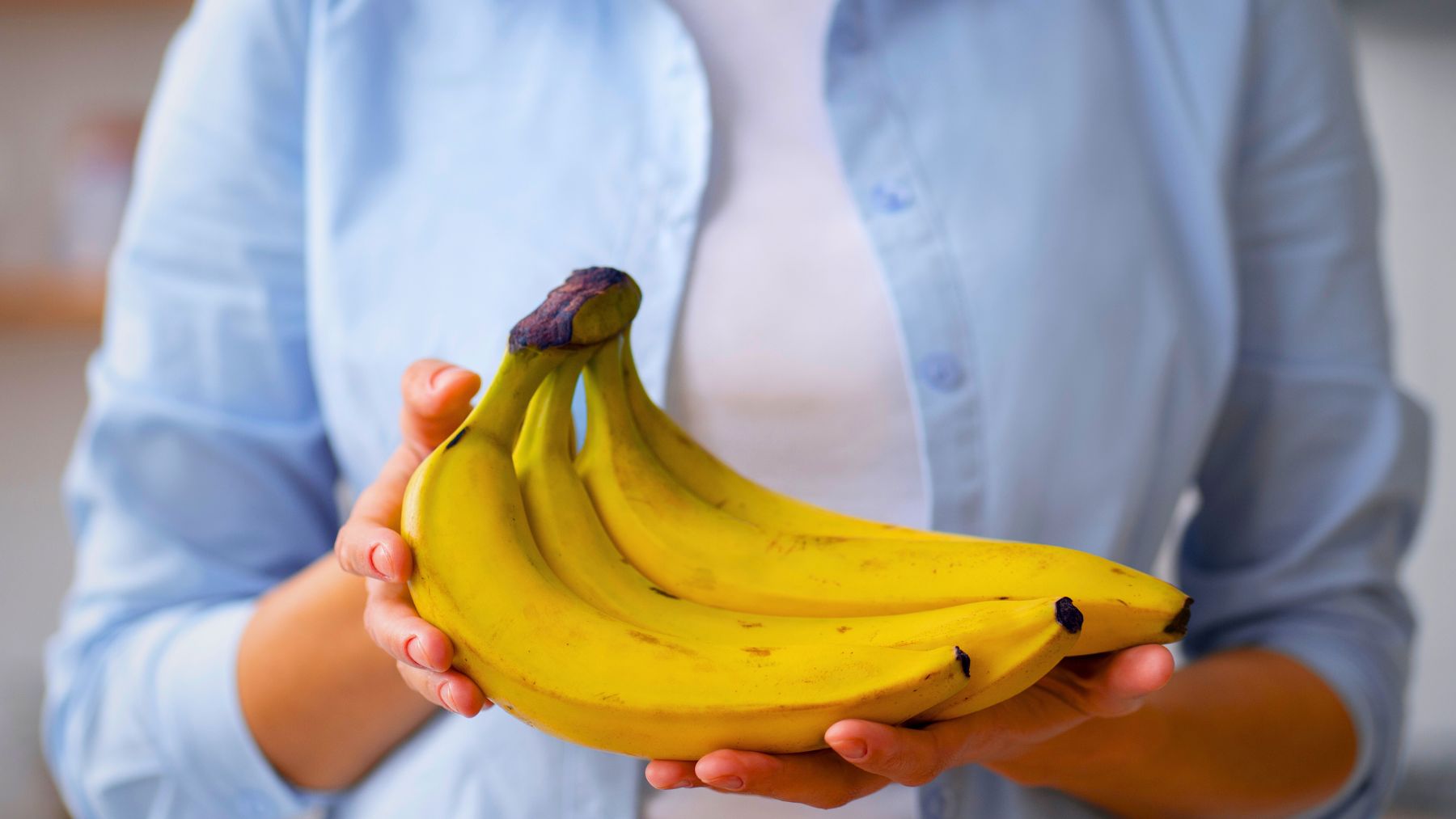Bananas tend to brown too quickly, leaving you frustrated after buying what you expected to be a fresh snack. Instead of resorting to complicated gadgets or constant refrigeration, there is a simple method that takes only seconds to implement. This technique focuses on the stems—the primary source of ethylene gas, a hormone responsible for triggering ripening in fruits like bananas, avocados, and mangoes.
Here, we’ll explore effective storage techniques to preserve bananas and extend their shelf life. You will learn why cold temperatures can damage the fruit, how to properly freeze overripe bananas for smoothies and baking, and additional tips for maintaining the bright yellow color and firm texture of your fruit.
The best way to store bananas
Start by wrapping the entire stem cluster tightly in plastic wrap. Bananas naturally emit ethylene gas from their stems, and this accelerates the ripening process by initiating a series of enzymatic reactions that lead to browning. By sealing the stems, you trap the ethylene gas and limit its exposure to oxygen.
This containment can slow down the chemical reactions that cause the fruit to deteriorate. After wrapping, store the bananas at room temperature in an environment ideally between 60 and 68°F. Given that these are tropical fruits with delicate cell structures, cold temperatures can break down their cell walls and turn the skin black, even though the fruit inside usually remains safe to eat.
Extra tips for storing bananas
Beyond the step of wrapping the stems, other habits can significantly improve the longevity of your bananas. Here is what experts in food storage and preservation recommend:
- Avoid heat and drafts: Keep bananas away from windows, ovens, or AC vents. Heat and airflow accelerate the ripening process by increasing the rate at which ethylene gas is released and by drying out the peel.
- Separate them from other fruit: Apples, avocados, or tomatoes naturally emit their own ethylene gas. Storing bananas separately from these fruits helps prevent cross-ripening.
- Skip plastic bags: Plastic bags tend to trap both moisture and ethylene, which can speed up spoilage. To cover your bananas, use paper bags instead.
- Freeze overripe bananas: When your bananas reach optimal ripeness, peel, slice, and leave the slices in the freezer for about 3 hours until frozen solid, then transfer them to an airtight bag. This method preserves the nutrients and natural sweetness of the fruit, making the frozen slices ideal for a cool treat on a warm day. Although maybe you should skip them in smoothies.
- Don’t refrigerate unless necessary: Bananas are very sensitive to cold. However, if your kitchen is consistently hot, you can place the bananas in the warmest spot in your fridge, such as the door, and store them inside a paper bag.
By wrapping the stems and avoiding exposure to extreme temperatures, you prolong the freshness of bananas and help retain their nutritional content. These vibrant fruits are rich in potassium, dietary fiber, vitamin B6, and vitamin C, all of which contribute to heart health, improved digestion, and mood regulation.

